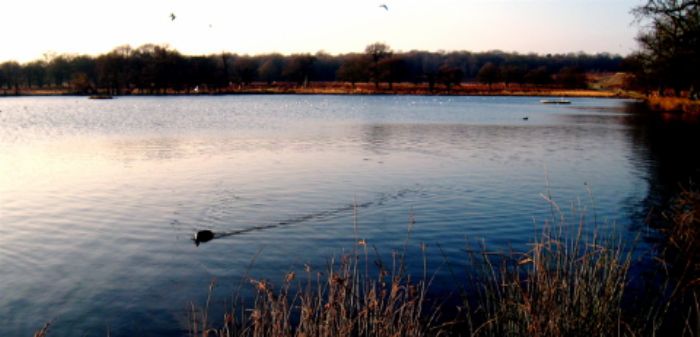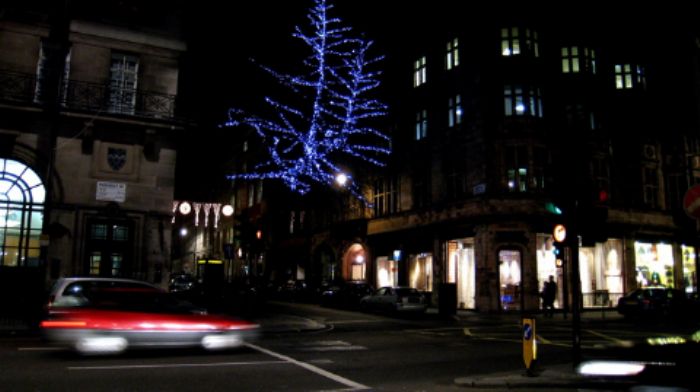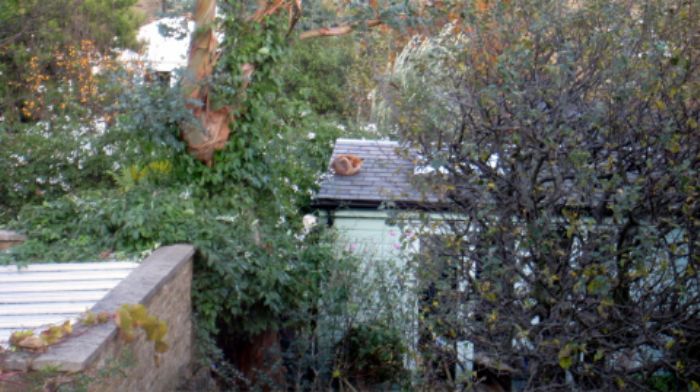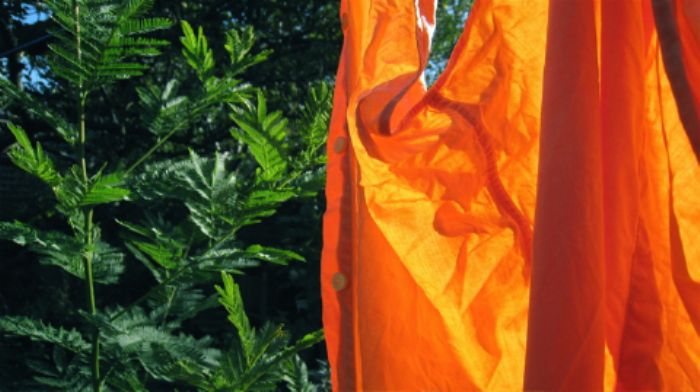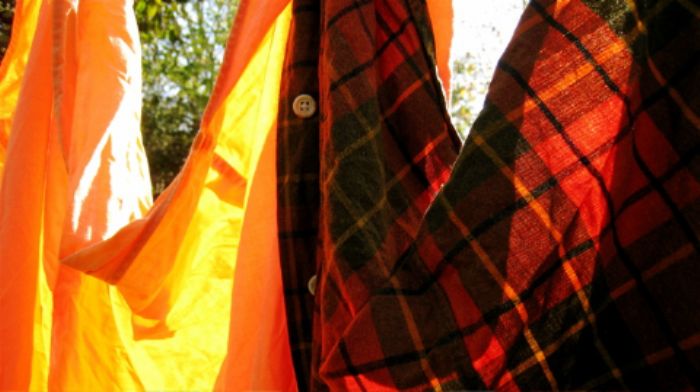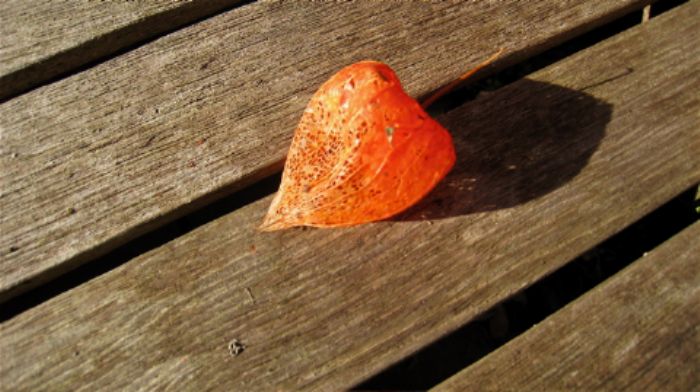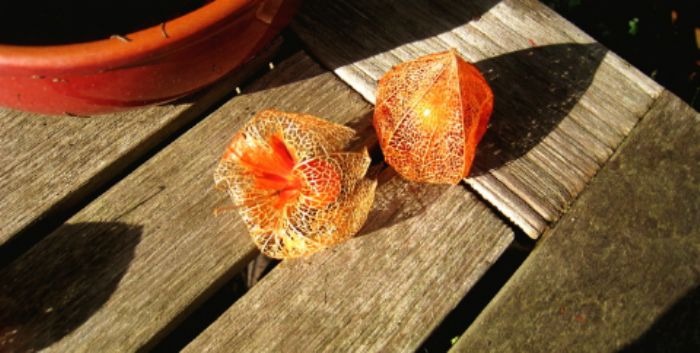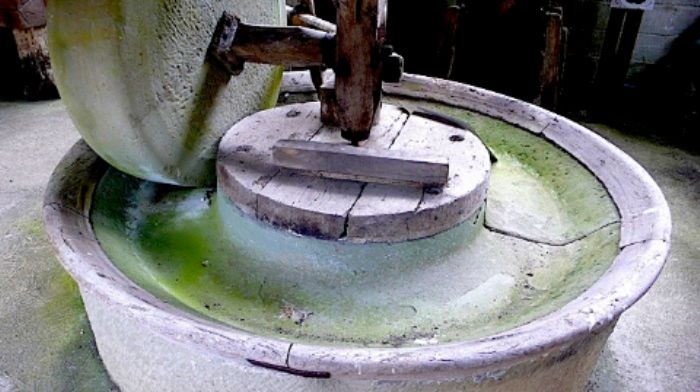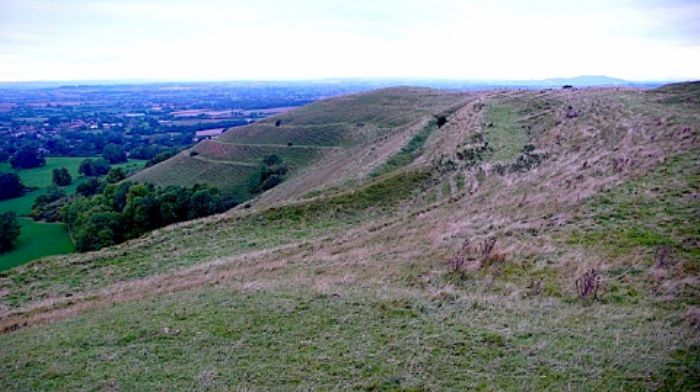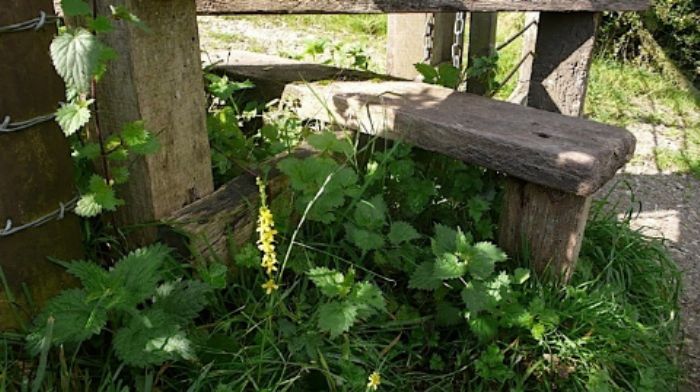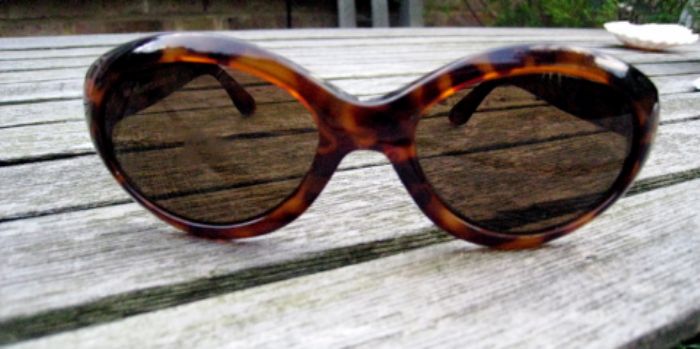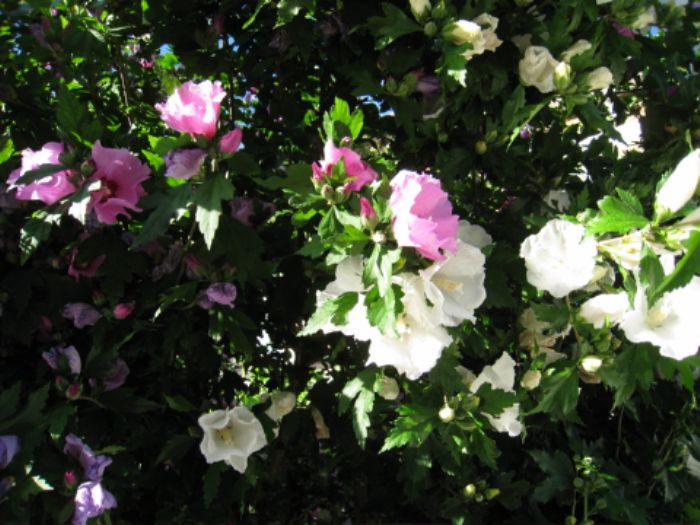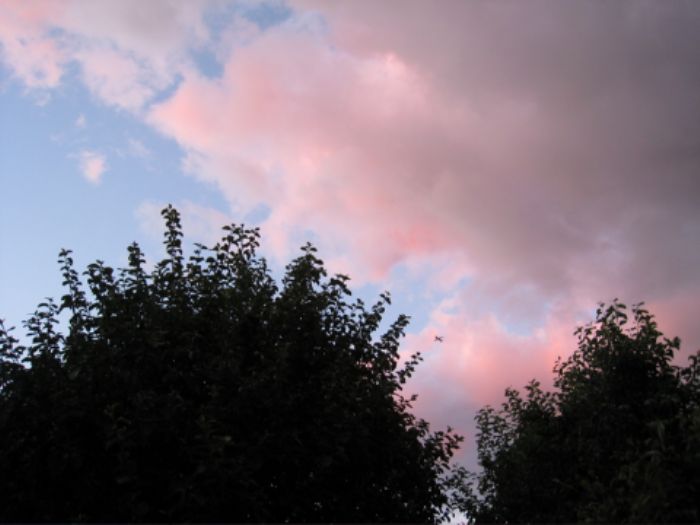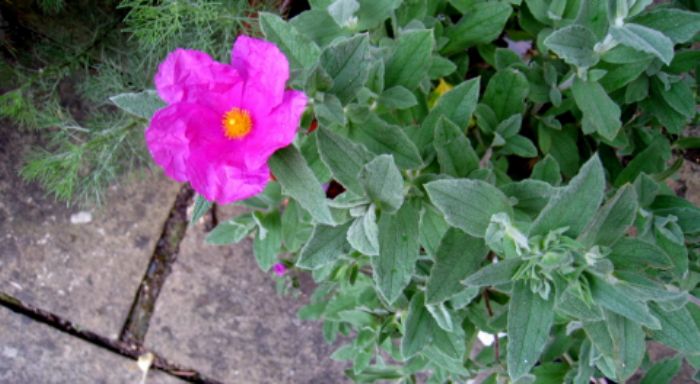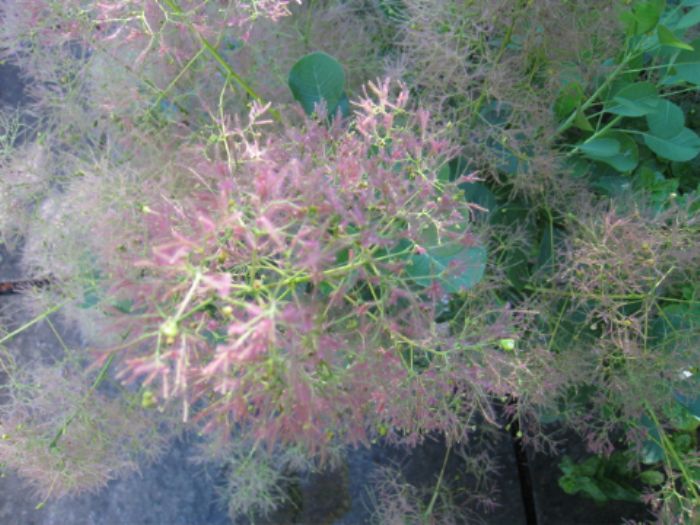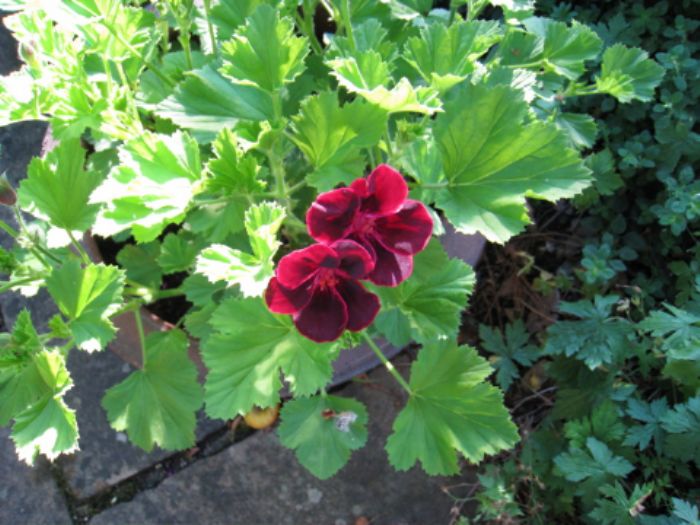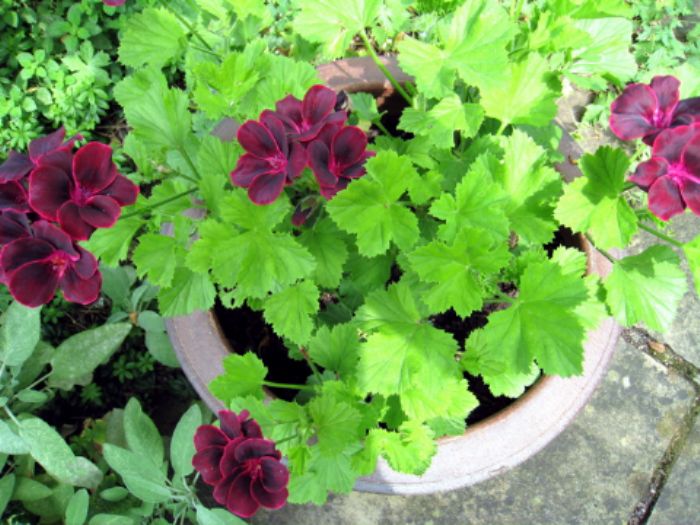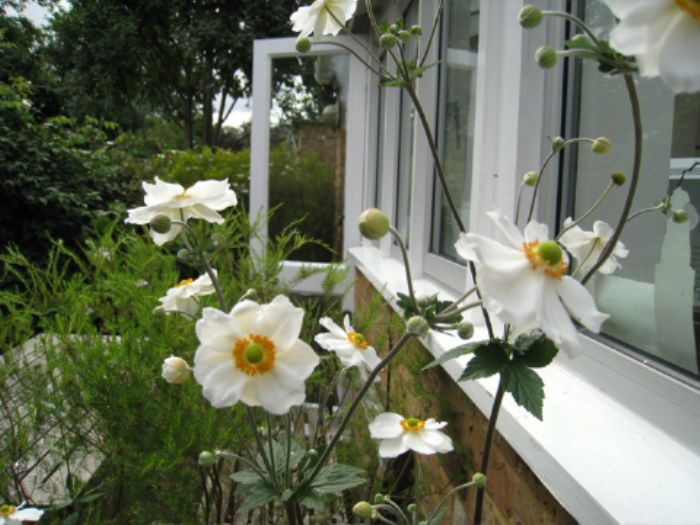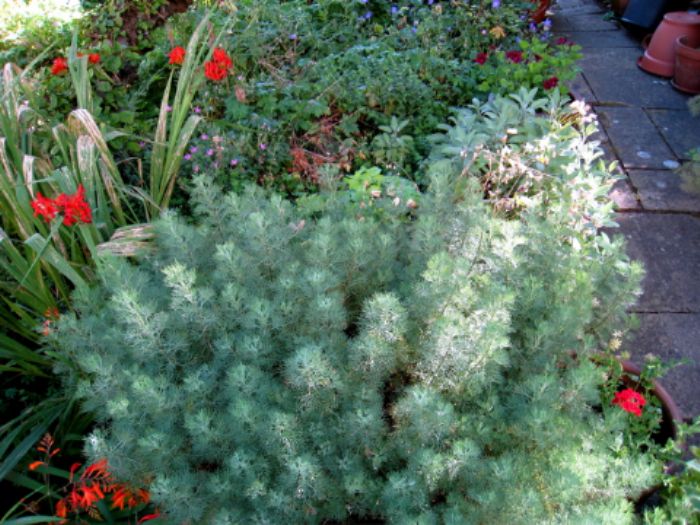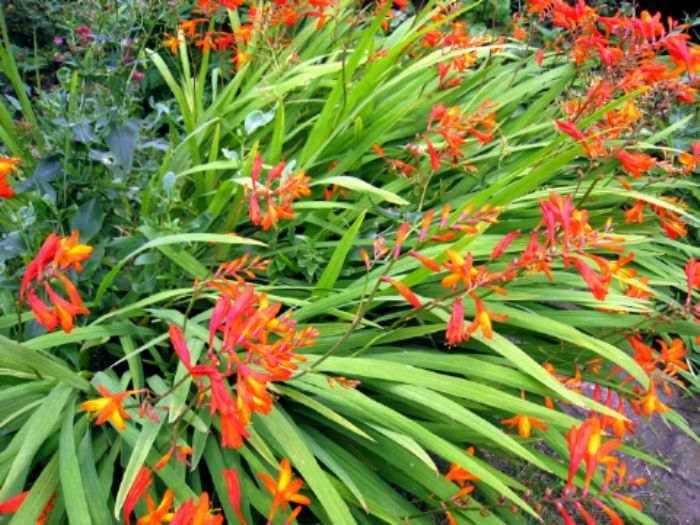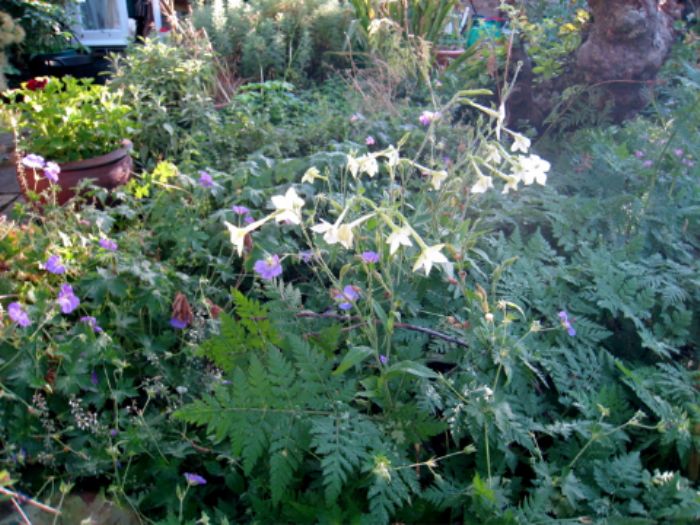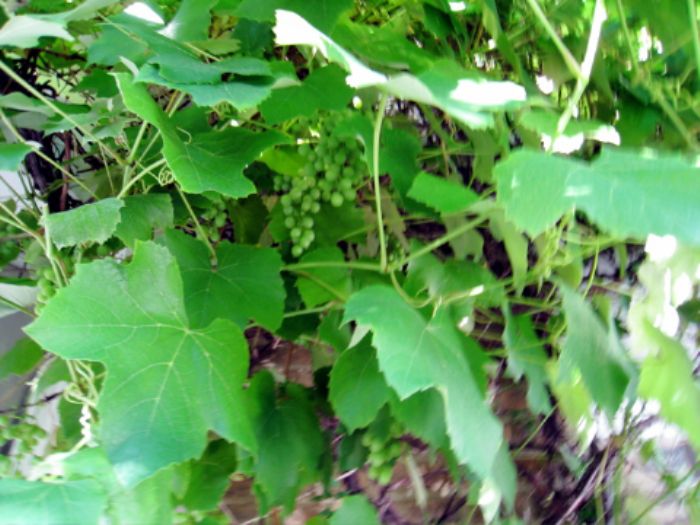Hania invited me to go with her to the 19th Festival du Film Britannique de Dinard, held between the 2nd – 5th October. Hurrah! I made my way to Liverpool Street, which is now a wonderful railway station, with a high, glass roof, making it airy and light. In the sixties, it was rather dingy and gloomy and workhouse Victorian in style – and now it’s been renovated to almost high art level. It’s very streamlined and a joy to use.
Trains to Stansted are every fifteen minutes, only stopping at Tottenham Hale. Bof – that is where I got lost once, trying to cross what seemed like a tangle of motorways, while looking for doorknobs for Hania’s flat. Trying to get back to central London was nightmarish. When I finally jumped on any passing bus rather than negotiate more central reservations, I almost wept with relief when the driver said he was going to Euston. I never thought that going to Euston would stir up so much emotion and the bus driver was lucky not to be hugged. That day ended up with a welcome supper of confit du canard at the Gay Hussar in Soho, weighed down with white porcelain door knobs in my pockets and aching feet.
When we got on the train to Stansted, I recognised the author, Deborah Moggach, sitting in our carriage, looking very glamorous. I worked with her at Oxford University Press in Dover Street in the early seventies, long before she became a well known writer. In fact, before OUP, she’d worked as a bus conductress for a year. I debated whether or not to say hello and decided against it, firstly because I would have felt awkward if she hadn’t wanted to reminisce and also, I wanted to spend time talking to Hania. I expected Debbie might be going to the film festival too and I could hook up with her there – but no – in the event she was going somewhere else – probably to the Frankfurt Book Fair. She wasn’t on our flight anyway, and I almost wished I’d approached her after all, as she was always great company at OUP. I remember her first husband, Tony Moggach. He had a dark green Morgan car, which we all thought very glam.
This was my first experience with Ryan Air and it turned out to be very agreeable. All went to plan and we touched down at Dinard with perfect timing. You walk down the steps from the plane, which always makes me feel like a celebrity but there were no photographers to meet us! The airport is just a large field and it takes fifteen minutes by coach to get to the town. It’s interesting to see what different experiences people have of airports. I’d travel to stress free Dinard any time.
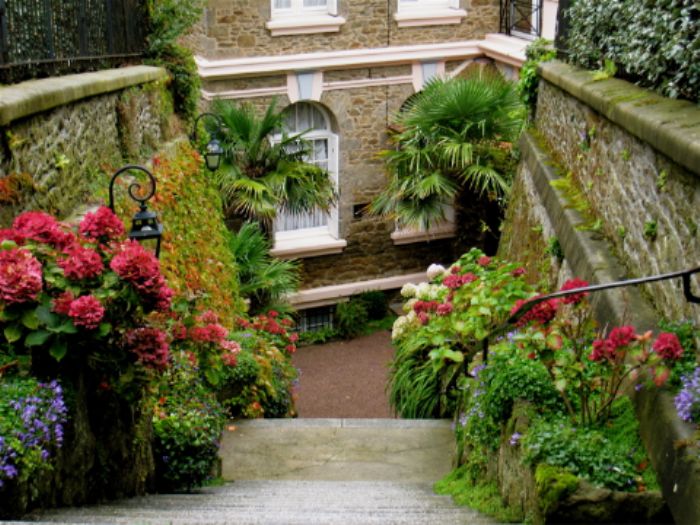
Entrance to Villa Reine Hortense
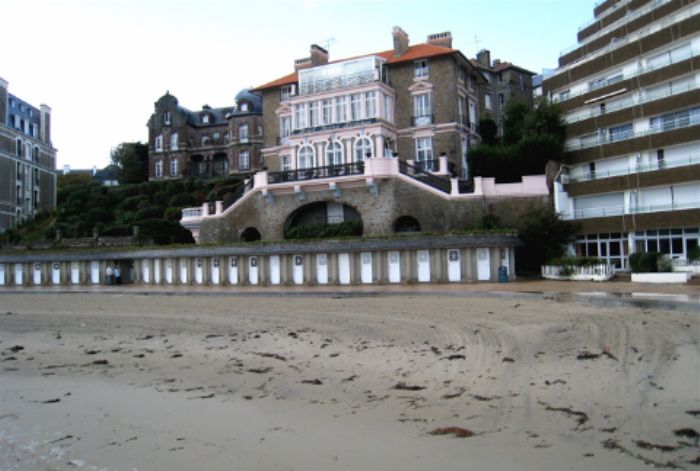
Villa Reine Hortense-our hotel
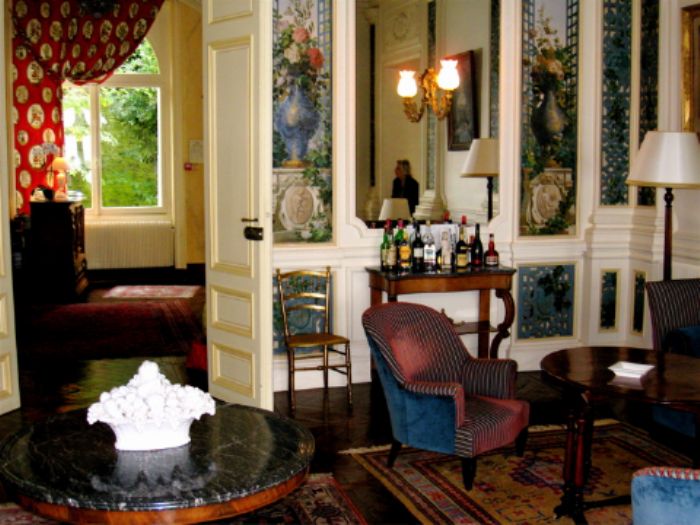
Sitting room
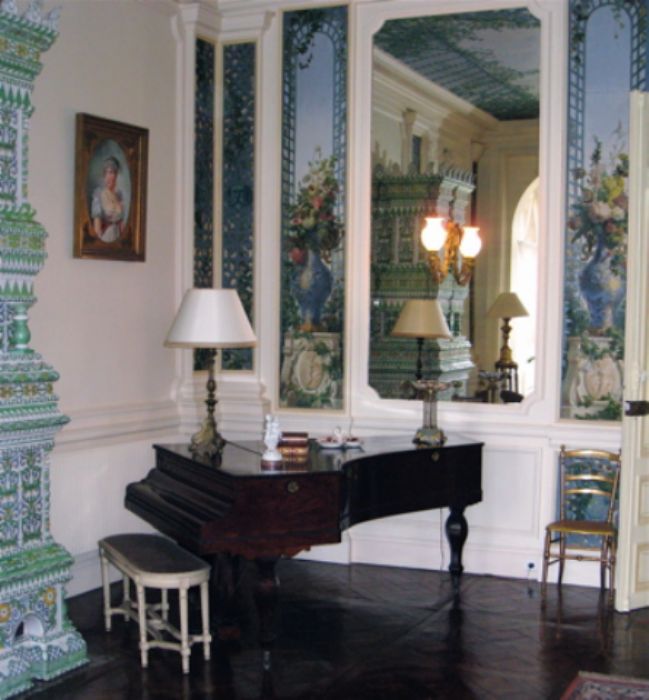
…and a piano
Stormclouds were building up as we arrived at the Palais des Arts, which overlooks the sea. Dinard is unbelievably Hulot-esque with beautiful villas from the Edwardian era overlooking ‘la belle plage’, which is flat and sandy. The overall impression I had was of a civilised, stylishly picturesque and rather solidly old-fashioned, fin-de-siècle, seaside town. Next, we had to find our hotel, the Villa Reine Hortense. It overlooks the sea and rather than describe its delights, I took a few photos.
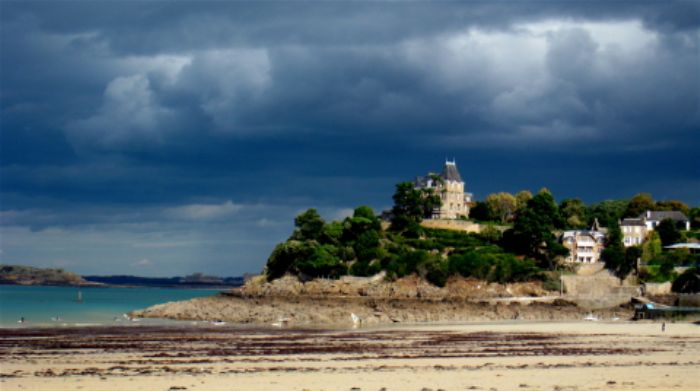
Stormclouds over Dinard
We asked about dinner and were directed to a restaurant on the sea front called L’Abri des Flots. Juicy oysters were followed by turbot and sea bream. The fish was fresh and delicious but the waitress swooped down on us at regular intervals like a ravening seagull. We then made our way to the first film which was an adaptation of ‘My Cousin Rachel’ (Daphne du Maurier), starring Richard Burton. It was hugely melodramatic and his tight, ballet style trousers looked dangerously fragile as he ran, seized with desire, along the cliffs, which hung over a raging, stormy sea. We made our way back along the beach at midnight and listened to the crashing of the waves of our own raging, stormy sea. it’s quite unsettling to look at a dark void and know that this untameable wild and powerful monster is out there. There’s something to be said for the romance of walking along the sand in the twilight but this was inky blackness and because of the storm and driving rain, I ended up scuttling along more like a crab, looking for safety in a rock crevice. Luckily, the Villa Reine Hortense had rather more creature comforts and after a hot bath I slipped under the covers and enjoyed a deep and dreamless sleep.
DAY 2
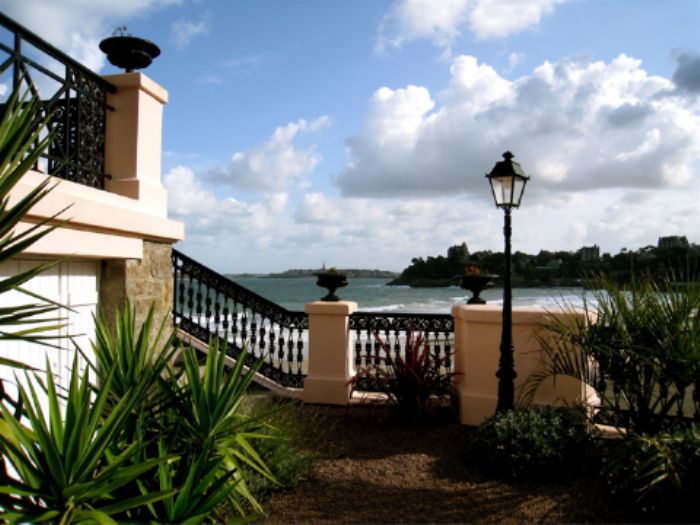
Garden at Villa Reine Hortense
The next day was brighter but with a fierce wind which tweaked at us, ruined our hair and blew us all the way along the beach, as if we were a couple of autumn leaves. Our first film was called “Boy A”. It was very well made – just as if it was a documentary – about two boys, one of whom killed a girl, who was a schoolmate. Both boys went to prison and this is a story of how one of them was rehabilitated into society, with flashbacks as to what had happened. I think this film should be shown as part of the school curriculum.
The second film was Turkish and called ‘The Market”. It had French subtitles. Lazily, I was waiting for the English ones which never came but Hania and I understood almost all of it in French. Of course, it’s easier to assimilate the written rather than the spoken word but, all the same, I felt pleased that my French stood up. It was a good story about the travels of a man and his uncle as they tried to get medicines for their village. It showed how it was almost impossible to do this without getting involved with gangs and corruption. The character of the uncle was delightful and lifted the dark side somewhat.
Now I was tired but we got a sandwich in a bar and hurried on to film number three, which was English but the title was ‘French Film’. It was basically a romantic comedy, which was quite frustrating and lacked body. It starred Hugh Bonneville and Ann Marie Duff, both actors I like. However, they couldn’t lift the script from mediocrity.
By this time I was both ravenous and exhausted so we repaired to L’Abri des Flots again and braved ‘the seagull’, who bore down on us as if we were prey. I don’t remember what we had and although I dearly wanted to go to my bed, Hania insisted we go to the film ‘Young at Heart’. Quelle joie! It’s a true story about a choir in the U.S., where everybody is of pensionable age and most of them in their 70’s and 80’s. They have a dedicated conductor who pulls out all the stops and they sing everything from ballads, to rock ‘n roll and rap music. Many of them are interviewed and speak in the film and we get a fly on the wall view of their lives and how they manage not only the choir in their home town but they even travel to Europe where they have been extremely successful. It was a wonderful piece of cinema and I must definitely get a copy and show it to John. It’s an inspiration and not to be missed.
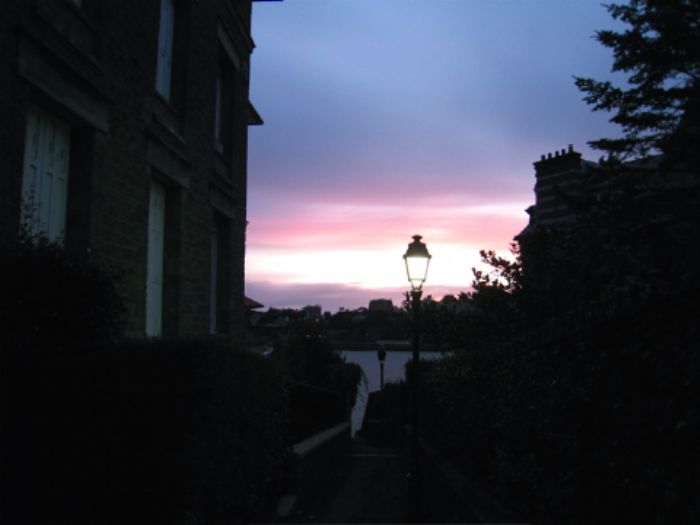
Dinard – le coucher de soleil
Heavy eyed after four films in a day, we tottered back along the beach, up the narrow stone staircase and through the silent garden to our comfortable beds.
DAY 3
First of all, we made a quick, early visit to the market in Dinard. There is both a covered and an outside one. I would have been happy to stay here for an hour or two but Hania wanted to go to the market in Dinan, another town a little way up the Rance estuary. She and Gaia had gone last year and come home with chic French shoes. We caught the 9 am bus (yawn) and it took about 30 minutes. The bus stop is at the railway station and then we walked to the ‘vieille ville’, which is down steep cobbled streets past ruined fortifications, ending up at the river. There, we sat down with an enormous Alsatian, which thumped its tail on the floor while we ate scrambled eggs followed by apple tart and coffee. We were right by the river’s edge, whose banks were covered in pink valerian. The pretty houses were reflected in the smooth cool water of the Rance and we walked along the bank, coming upon an enormous ship beached over a hedge in a field. How did it get there?
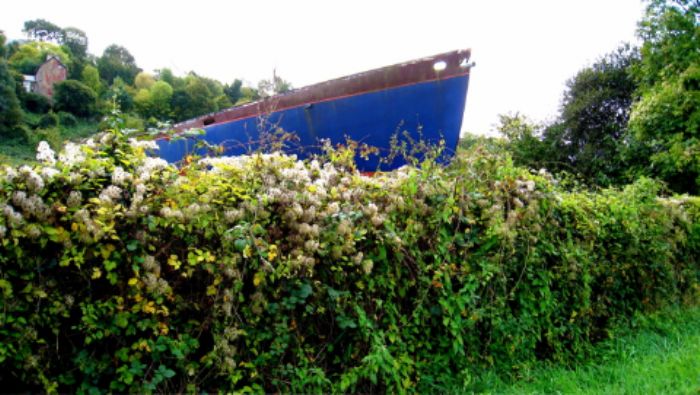
How did it get there?
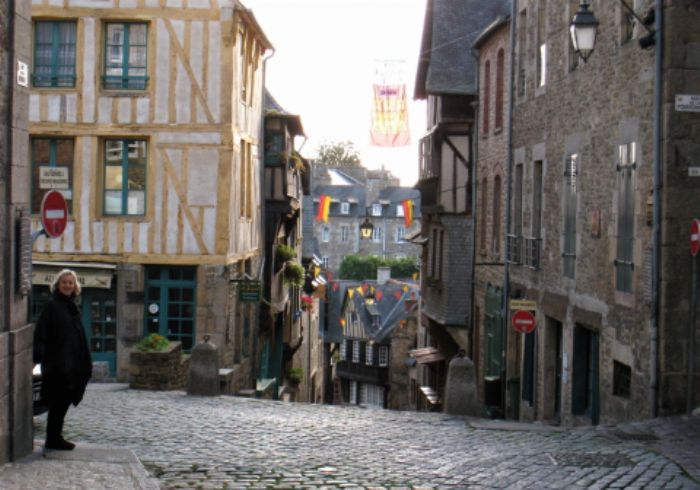
Dinan – Vieille Ville
On the way back we bought a sort of crêpe/pancake each, which a man was turning out in their hundreds from a hot plate at the front of a bakery. It was delicious and propelled us back up the steep hills to the railway station. We stopped off at a hunting and fishing shop, where Hania thought she might find a present for her boyfriend. She did – in the form of a hollowed out moulding of a pigeon, which she insisted on wearing on her head. She bought two so that they could wear them together. The man in the shop was very puzzled.
Finally, the bus came and we got back to Dinard but missed the film ‘Genova’ as the queue to get in was too long. However, we did get to see Colin Firth in the corridor, before he ducked behind a curtain. He is in the film. We then revived ourselves somewhat with a tasty tomato and onion galette, enough to attempt a long walk in the sun around the coastal path which is beautiful, with views of St. Malo. Suddenly, blue sky appeared and the sun lit up all the little boats on the sparkling water and I took an excellent photo of a butterfly sunbathing on a rock. Too few of them have been seen this year. There were lots of dogs running around on the beach enjoying themselves, chasing seagulls and splashing in the waves.
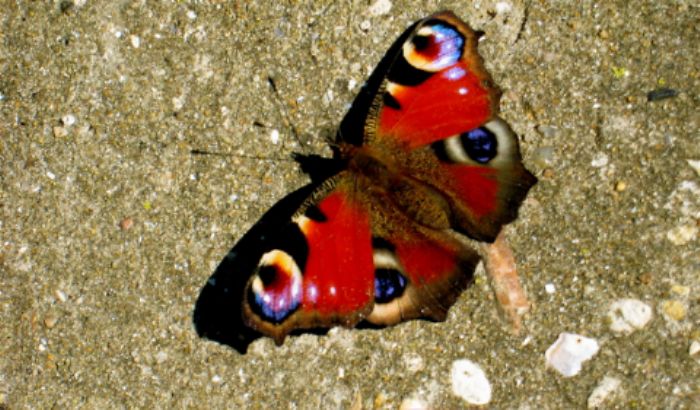
Peacock butterfly
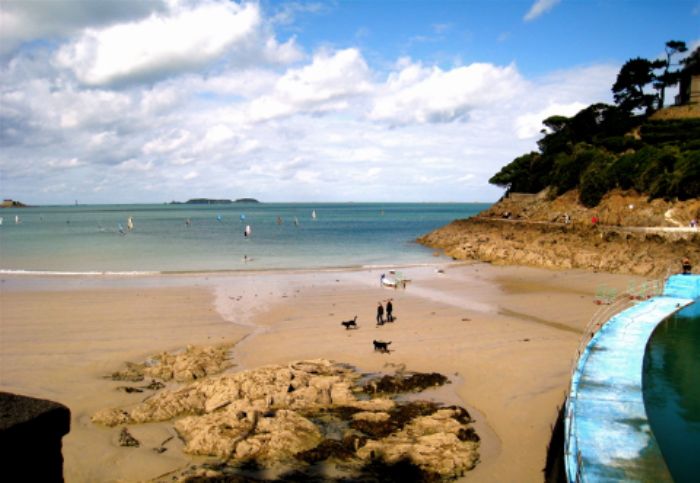
Pawprints
Hania then decided to show me the hotel where many of the film people stay and we ended up in the rather smart bar which has stripey brown and gold wallpaper. There are pictures of Tony Curtis and Kirk Douglas on the wall, as they stayed here when they were making a film in a castle by the sea, not far along the coast. I had a cocktail called a ‘Boa’ – actually, I had two. It was a mixture of orange and pineapple juice with San Pellegrino bitter, decorated with black grapes, slices of lime, and chinese lanterns (physalis). Most stylish and very quaffable. Meanwhile, somebody played Frank Sinatra, Dean Martin and Edith Piaf songs on the piano. Just my sort of evening. Hania seemed to drink quite a lot of Bloody Marys.
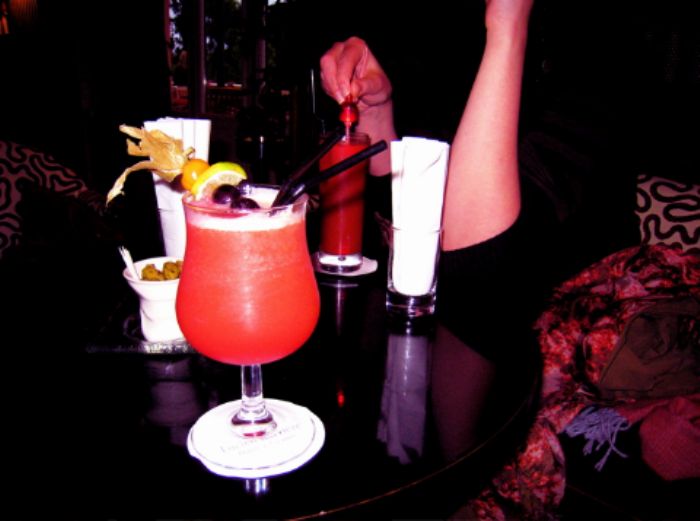
Boa Boa
Later on, we found a very charming restaurant, almost opposite the heated saltwater swimming pool and after Hania had finished her meetings with various writers, we spent the evening eating fish soup, moules, salade niçoise, followed by caramel liègoise and poire belle hèlène, all with a jug of Brittany cider, served in pottery cups. Then we trundled home along the beach and I tumbled into bed, full of sea air and feeling like a boat bobbing on the waves.
DAY 4
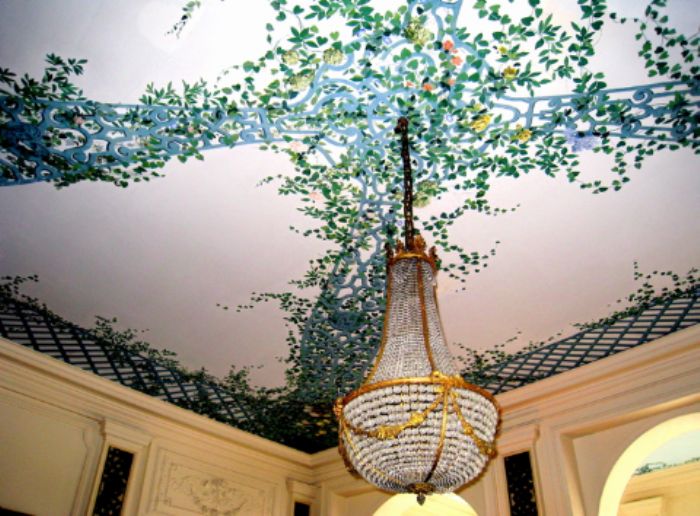
Breakfast room ceiling Villa Reine Hortense
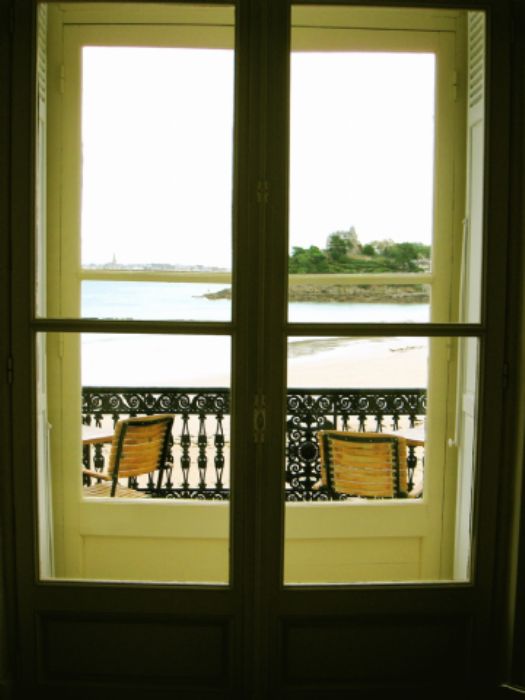
View from hotel to St. Malo
Last day. As we were eating our croissants and jam, looking out over the grey, choppy sea towards St, Malo, a seagull came and perched on the table, out on the balcony and peered at us malevolently through the window. Later on, we fed some more of them with the remaining croissant, as we walked along the beach. Pale eyed and very macho, the birds sidled up and then proceeded to terrorize us, having massive, screaming fights over tiny crumbs and looking at us viciously, as possible future tasty morsels.
We had left our cases at the hotel while we went to see a delightful nature film called ‘The Meerkats’. Afterwards we had an omelette at a café in the marketplace, sitting outside, even though the wind was blowing hard and rain threatened. Then a quick foray to the shop by the beach, which sells salted caramel in jars. We also bought sardines in pretty tins, bags of sea salt for the bath, two pottery coffee cups in red and black, reminiscent of the colours of ripe figs, and several bars of chocolate. I also added a jar of dried seaweed ‘flocons’, to shake over salads or add to fish dishes and risottos. I reckoned that as we all came from the sea and we need some iodine, that this would be a good idea. However, the results remain to be seen – at least there’s not enough to indulge in seaweed pie, which we used to make in the sixties, and which did seem to be delicious at the time!
A last promenade along the beach and back to collect our cases. Florence Benoist was there and because we loved the hotel so much, she kindly showed us all the other rooms. They are all of different sizes and individually decorated, though in similar style. All of them very inviting – you must go and see for yourselves. The hotel closes between mid October and April. Madame Benoist helped us down the stone stairway with our now very heavy cases full of salted caramel and we wheeled them along the crescent of blue and white beach huts, which follow the curve of the beach up to the Palais des Arts.
We didn’t manage to get to the heated saltwater pool or do more coastal walks but we did pack a lot in. There was a crowd hanging out at the Palais des Arts, waiting for the coach to the airport and we joined it. The red carpet was now a bit sodden and salt stained but had served its purpose. I think the locals probably like the festival on the whole and everybody is invited to all the films, which cost five euros a throw. ‘Boy A’ won Best Film – voted for by the audiences.
Ryan Air are very fierce about the weight limit on cases and we had to do a lot of juggling with our two. Even so, Hania had her salted caramel confiscated, as she had it in her handbag – over the 100 gram limit for things taken on the plane. I got told off about my sardines but they let me keep them. I had thought it was liquids that were the problem but decided that gratitude for letting me keep them ‘just this once’ was the better part of valour. Maybe being ‘desolée’ for inadvertently smuggling a tin of sardines, weighing 120 grams, was helped by my speaking in French to the customs official. I like to think so, anyway. Small victories are always good! I definitely want to come back here.
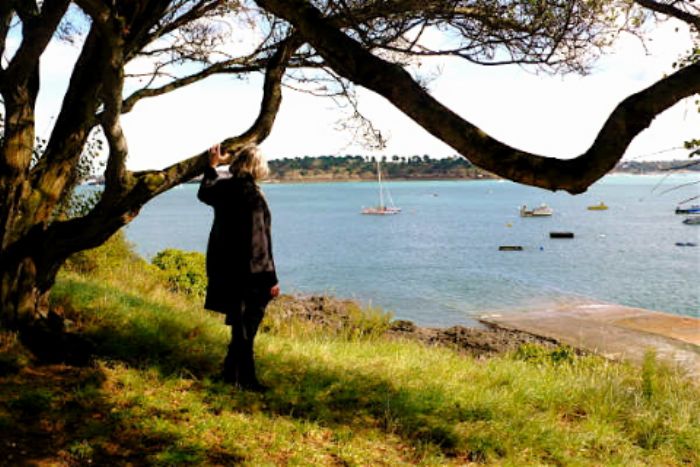
Au revoir, Dinard. Quel temps formidable et merci à Hania pour tout.
FIN

